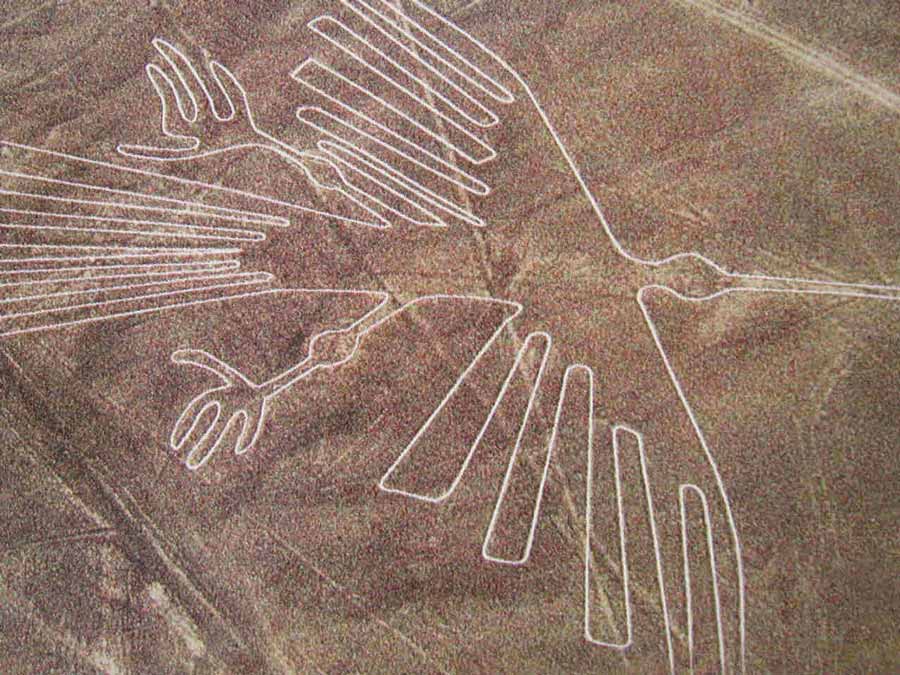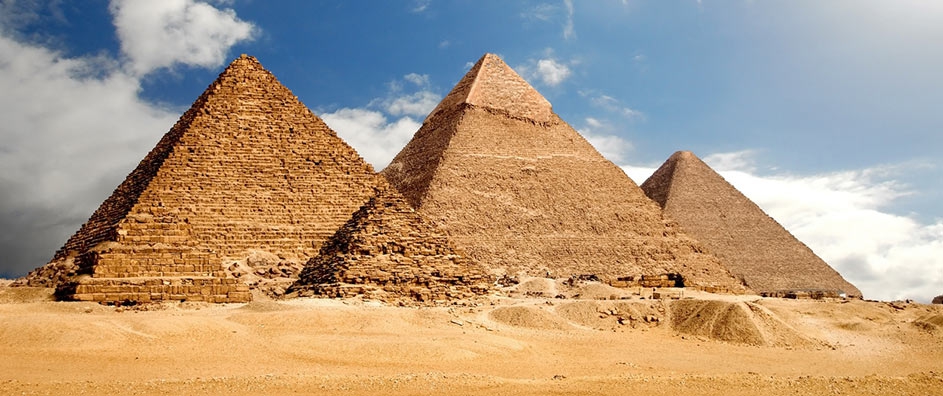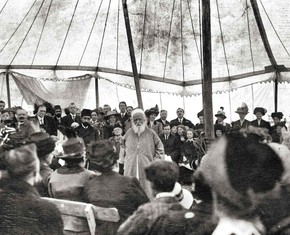The views expressed in our content reflect individual perspectives and do not represent the authoritative views of the Baha'i Faith.
In 1929 a remarkable map was discovered in the library of the old Imperial Palace at Constantinople.
Compiled by the Ottoman Admiral Piri Reis in 1513, the map shows with reasonable accuracy portions of north Africa, the western coasts of Europe, the eastern coast of South America and the northern coast of Antarctica. His accurate representation of Antarctica 305 years before its “discovery” in 1818 has lead scholars to speculate that Reis may have had access to source maps collected and stored in the ancient Library of Alexandria. What is particularly astonishing is that the 1513 map shows significant portions of the Antarctic continent ice free.
Some archeologists insist that a great civilization flourished over 10,000 years before the coming of Christ. Remembered in legends, traditions and Pyramid texts as a golden age, they say those ancient peoples built great structures by moving into place stones weighing up to 200 tons. The pyramids of Giza, the ruins at Machu Pichu, the inland seaport of Tiahuanaco and the Olmec site at La Venta may be traces of that civilization and bear mute testimony to miraculous feats of engineering.
The people in that civilization lived at a time when great ice sheets covered much of the Earth’s northern hemisphere. An intelligent and seafaring people, they mapped the stars, determined longitude, aligned monuments to cardinal points and created a highly accurate means of marking time. They may even have known that the earth travels around the sun. Whether they understood something about the power of flight can only be pondered as one gazes from the air at the lines of the Nazca plateau and its ancient designs seeming to depict flight.

Nazca Plateau
Who were these peoples? We don’t know, but one theory concerning their civilizations is that the frozen ice sheets of Antarctica conceal the remnants of an Atlantis-like culture that colonized Central and South America as well as North Africa. The erosion on the face of the Egyptian Sphinx is thought to have been caused by precipitation which would date the Giza monuments to over 11,000 years before Christ, at a time when Egypt was devastated by rains and floods.
Between 10,000 and 11,000 BCE, the peoples of Tiahuanaco were swept away by terrible floods. At the same time, the highly evolved proto-agricultural life of the very ancient Egyptians abruptly declined. Over the face of the earth, all continents suffered extinctions of animal species. Ocean levels rose due to glacial thawing. Earthquakes under the seas generated huge tidal waves. Volcanic eruptions, electrical storms and hurricane force winds further convulsed the planet.
The devastating fury wrought by nature so long ago reminds us of the story of Noah. Grieved by the wickedness of man, the Old Testament says, God sent a flood upon the Earth, which destroyed all living creatures save those who entered the Ark with Noah and his family. Though this story may also be understood symbolically, similar deluge legends survive in scattered parts of the world. Several are independent of the Biblical account and, in the Americas, predate incursions of Christian Europeans from the late 15th century.
The fossil record and careful archeological research indicates the calamity that rocked the earth and its peoples some 12,000 years ago was perhaps caused by an earth crust displacement, with the 30-mile thick lithosphere moving over the hot central core of the Earth and gradually shifting the warm climate of Antarctica northwards, thawing the ice sheets covering parts of Europe and North America. The dim human memory of that catastrophic event apparently survives in myths and legends among many of the world’s cultures.
The Baha’i teachings allude to ancient cycles that have taken place on our planet, comparing them to the vast spiritual cycles brought into being by the prophets or manifestations of God:
When a cycle comes to a close, a new one is inaugurated, and the previous cycle, on account of the momentous events which transpire, vanishes so entirely from memory as to leave behind no record or trace. Thus, as you are aware, we have no record of twenty thousand years ago, even though … life on this earth is very ancient—not one or two hundred thousand, or even one or two million years old: It is ancient indeed, and the records and traces of ancient times have been entirely obliterated.
Each of the Manifestations of God has likewise a cycle wherein His religion and His law are in full force and effect. When His cycle is ended through the advent of a new Manifestation, a new cycle begins. Thus, cycles are inaugurated, concluded, and renewed, until a universal cycle is completed in the world of existence and momentous events transpire which efface every record and trace of the past … – Abdu’l-Baha, Some Answered Questions, newly revised edition, pp. 182-183.
These prophets–Abraham, Moses, Zoroaster, Christ, Muhammad and others–gave specific signs of the coming of One who would usher in a new Eden. They spoke variously of the time of his coming, his heritage, travels, family, mission, name, and sufferings. Anticipated by Hindus as a reawakening, by Judaism as an earth full of the knowledge of God, by Zoroastrians as an end to wickedness, by Buddhists as an era of unselfishness, by Christianity as a new heaven and a new earth, and by Islam as a reign of justice, this golden age, Baha’is believe, is inaugurated by the coming of Baha’u’llah.
According to the Guardian of the Baha’i Faith, it will gradually emerge out of these travailing times into a commonwealth of all nations:
Some form of world super-state must needs be evolved, in whose favor all the nations of the world will have willingly ceded every claim to make war, certain rights to impose taxation and all rights to maintain armaments, except for purposes of maintaining internal order within their respective dominions. Such a state will have to include within its orbit an international executive adequate to enforce supreme and unchallengeable authority on every recalcitrant member of the commonwealth; a world parliament whose members shall be elected by the people in their respective countries and whose election shall be confirmed by their respective governments; and a supreme tribunal whose judgment will have a binding effect even in such cases where the parties concerned did not voluntarily agree to submit their case to its consideration. – The World Order of Baha’u’llah, p. 40.
Baha’is believe the era we now live in—a time of upheaval and rapid global change—is destined to usher in an age of unprecedented global peace, unity and harmony, the golden age of humanity.
You May Also Like
Comments

















Eh... conspiracy theories like this bother me.
Here's a radical idea: Amerindian civilizations with engineering knowledge built those sites and structures.
Why does it have to be some ancient, magical empire?? Why not just believe that the people and civilizations who lived in the area built those things?? It seems like there's some sort of haughty attitude asserting that the natives in regions with ...architectural marvels just COULDN'T have built those things.
“And I said I still wanna be a human being
'Cuz it's a wild, wild ride... ”
The indigenous peoples of the Southwest US say the world was not destroyed once, by a flood, but four times - one of those times by fire! (Too close to home...)
Thanks for having the courage to explore a topic that is truly exploratory!